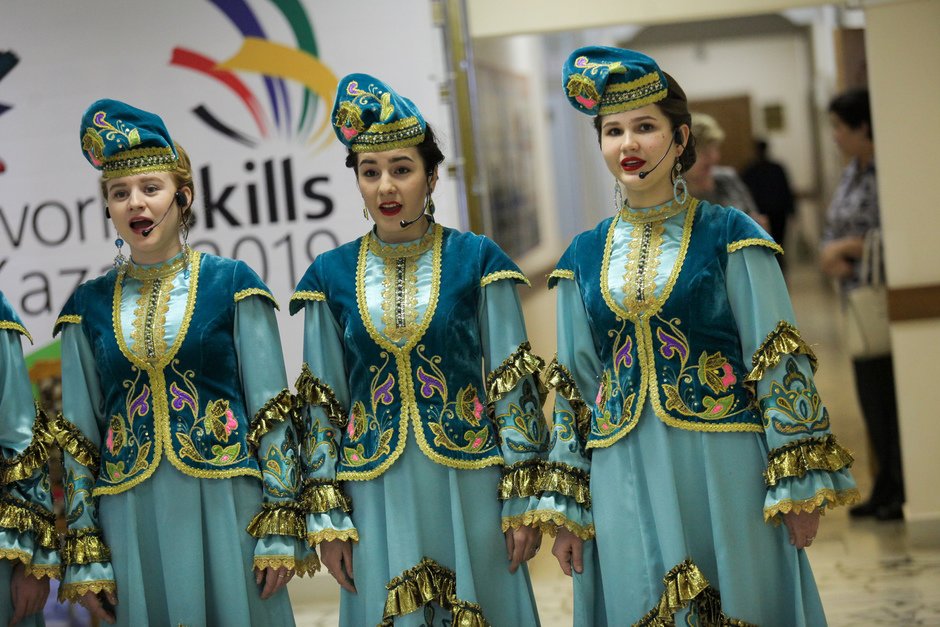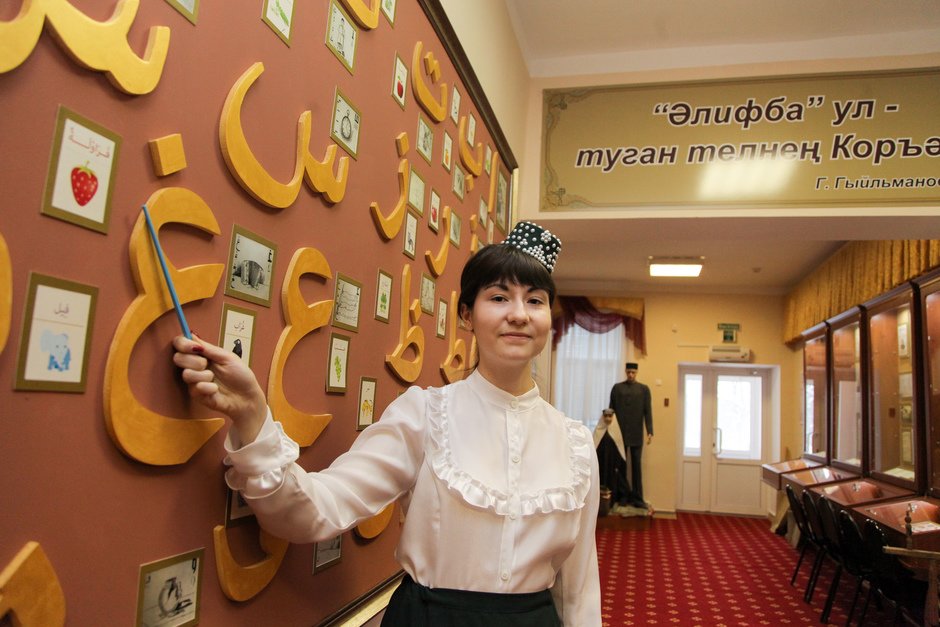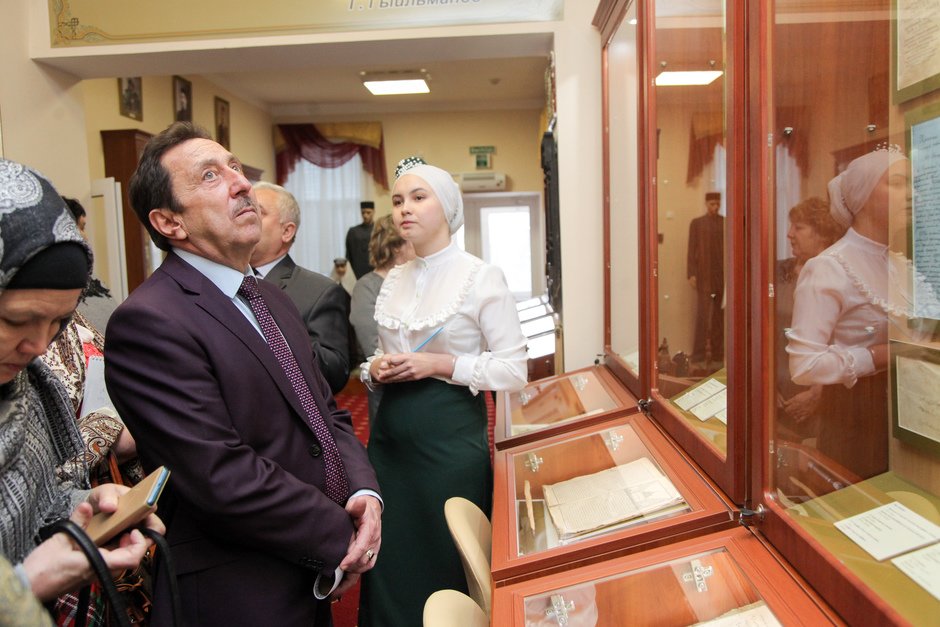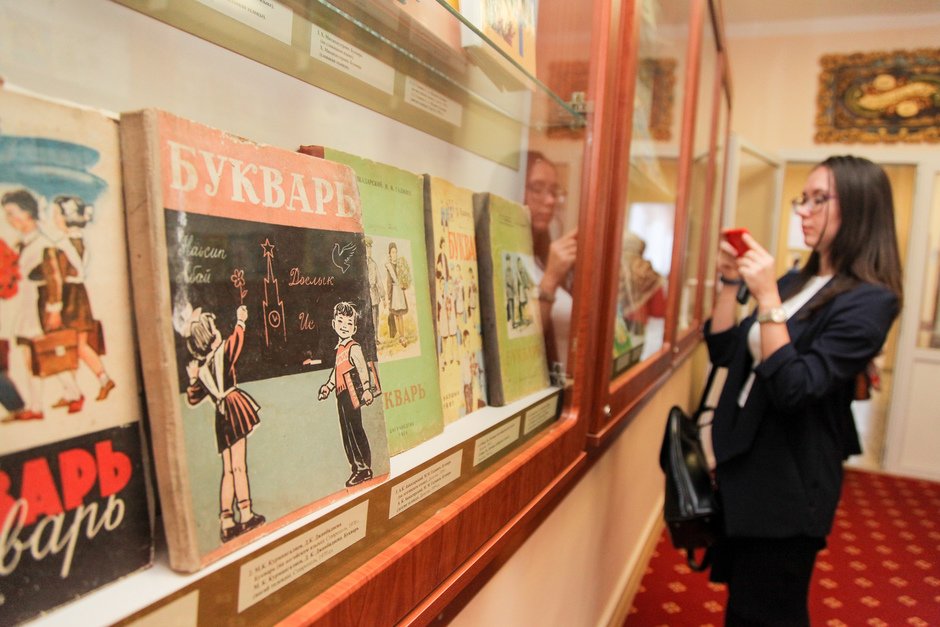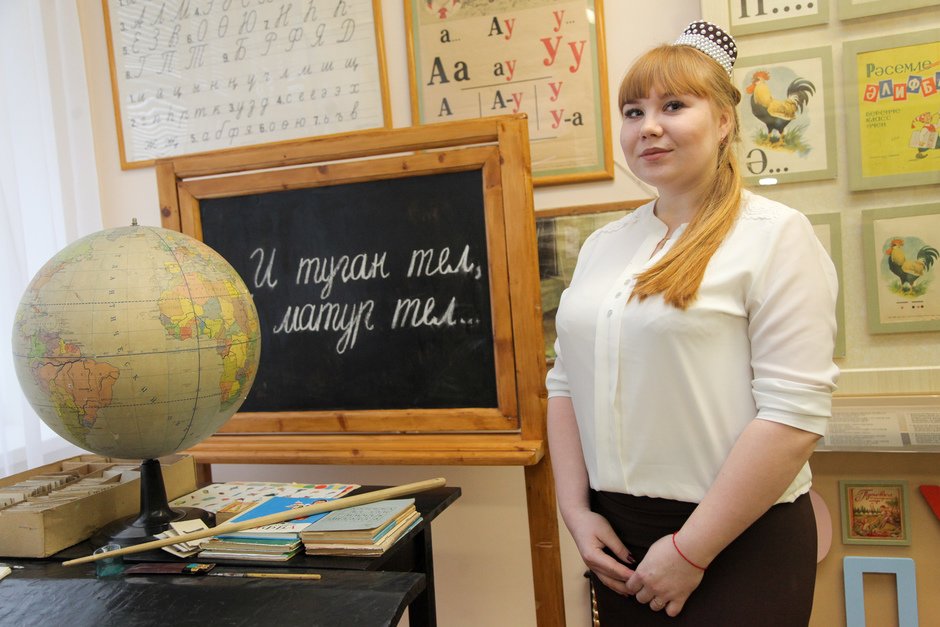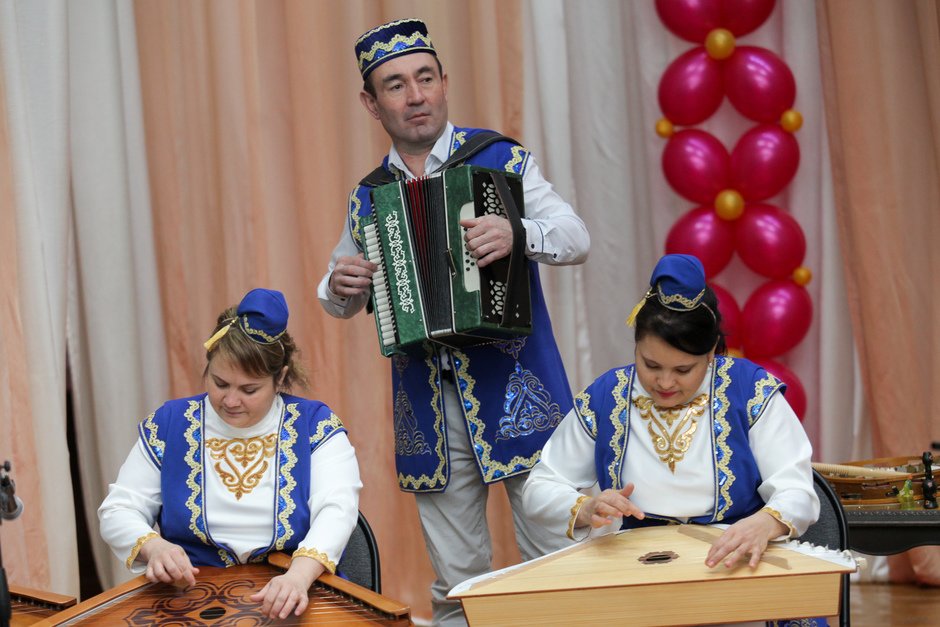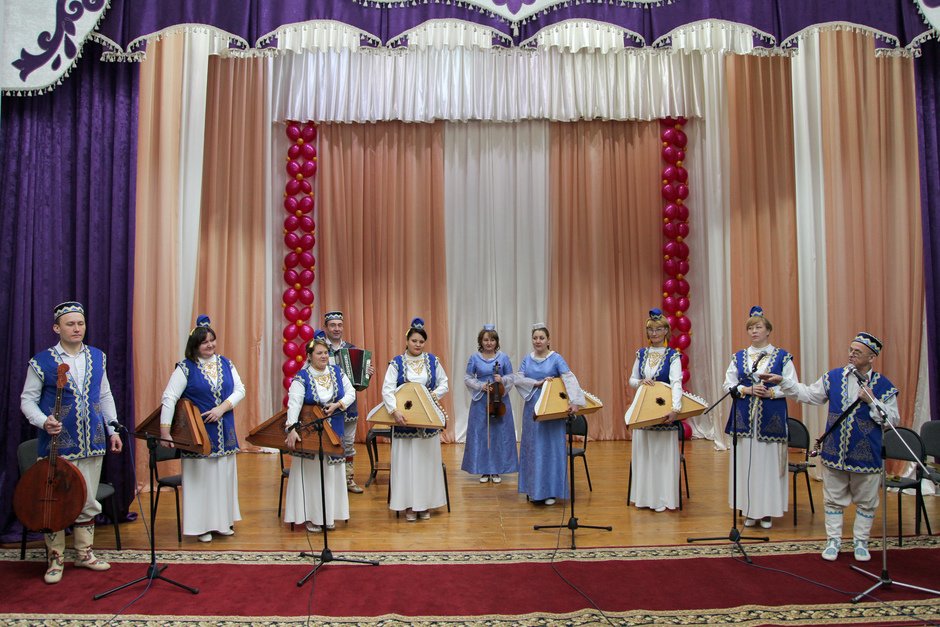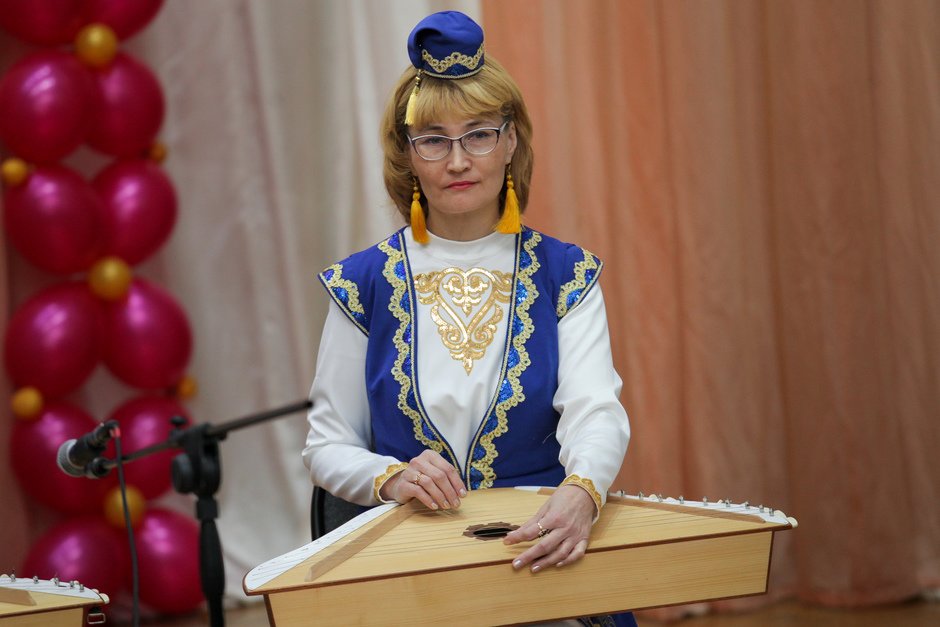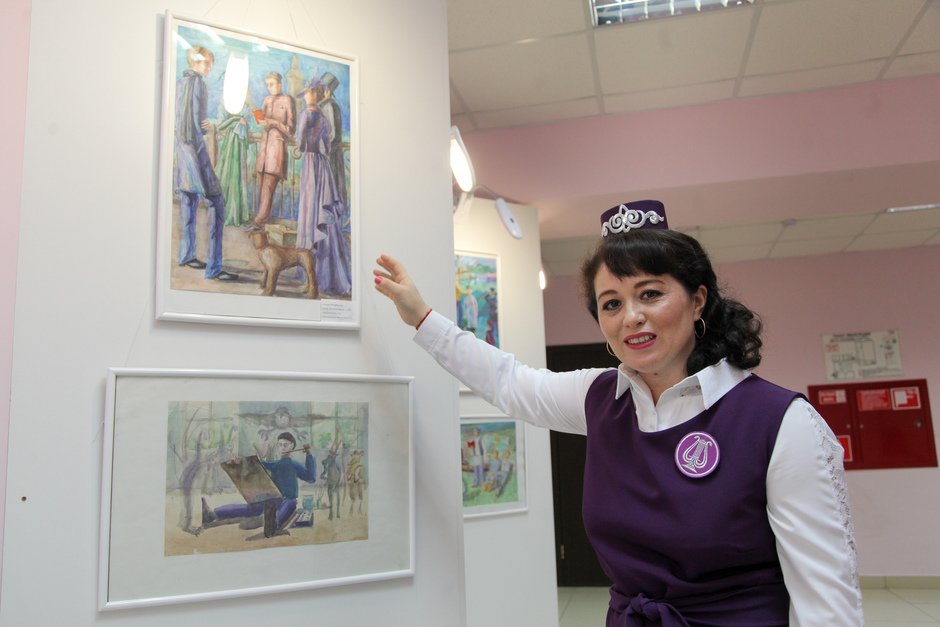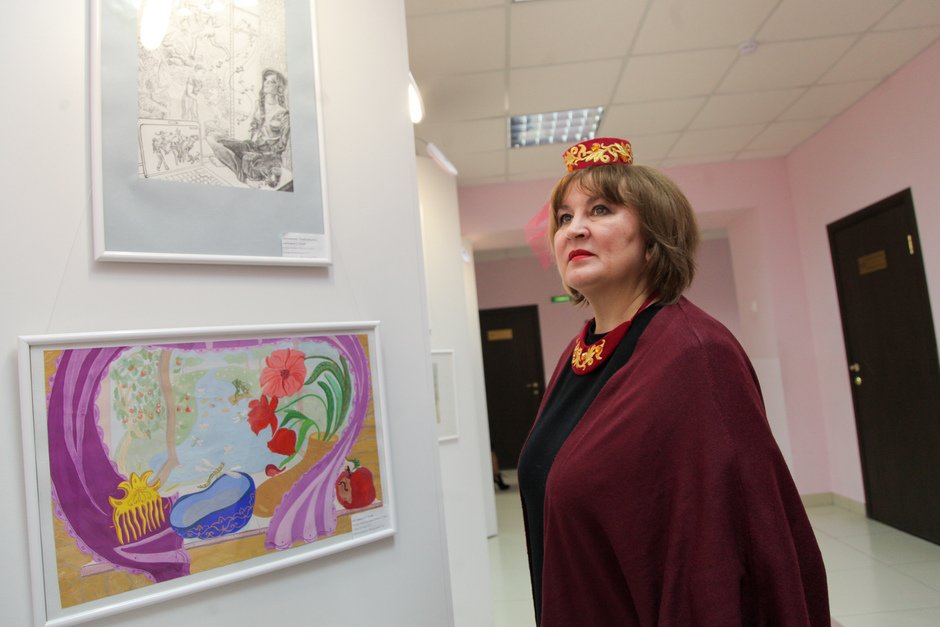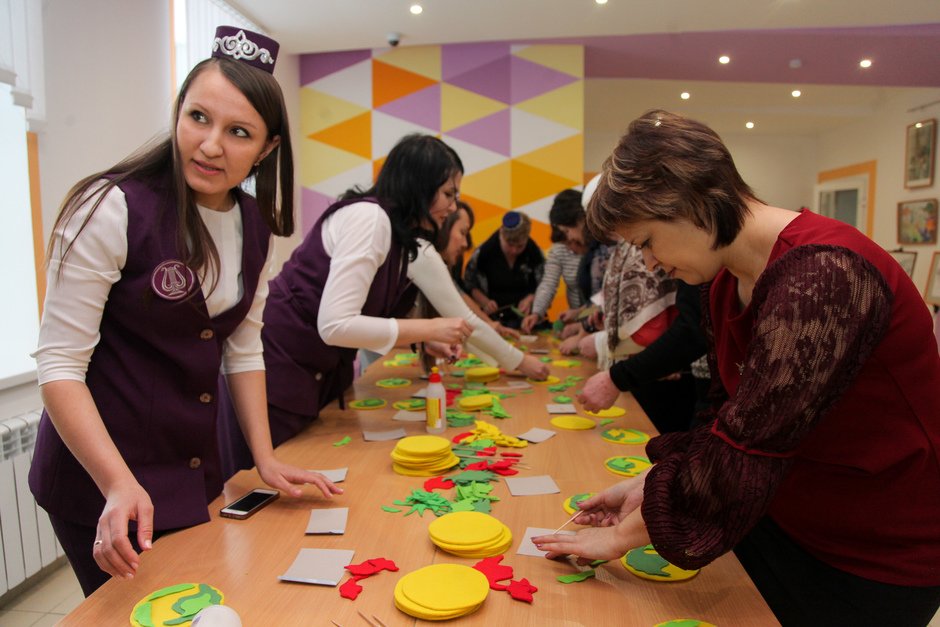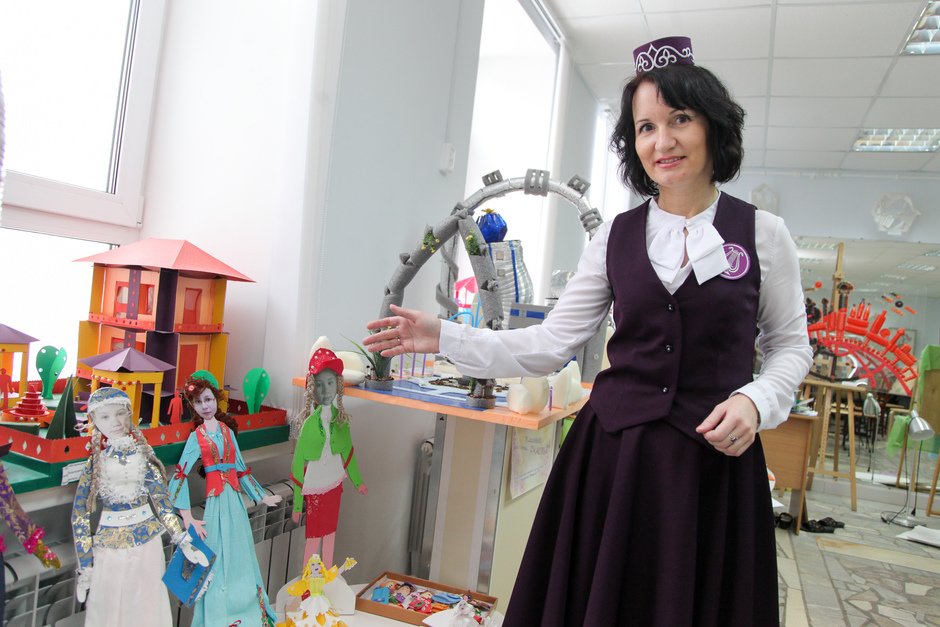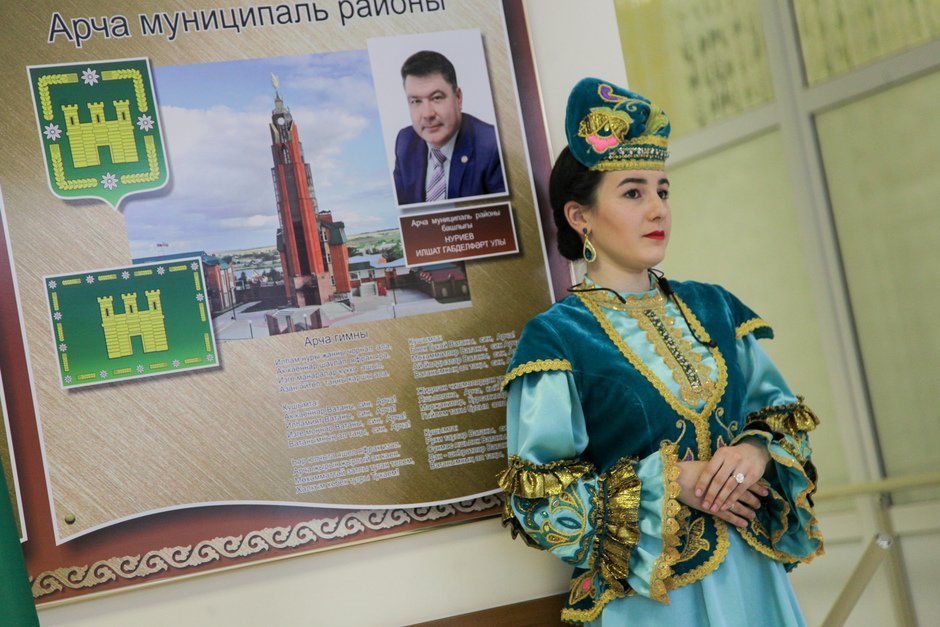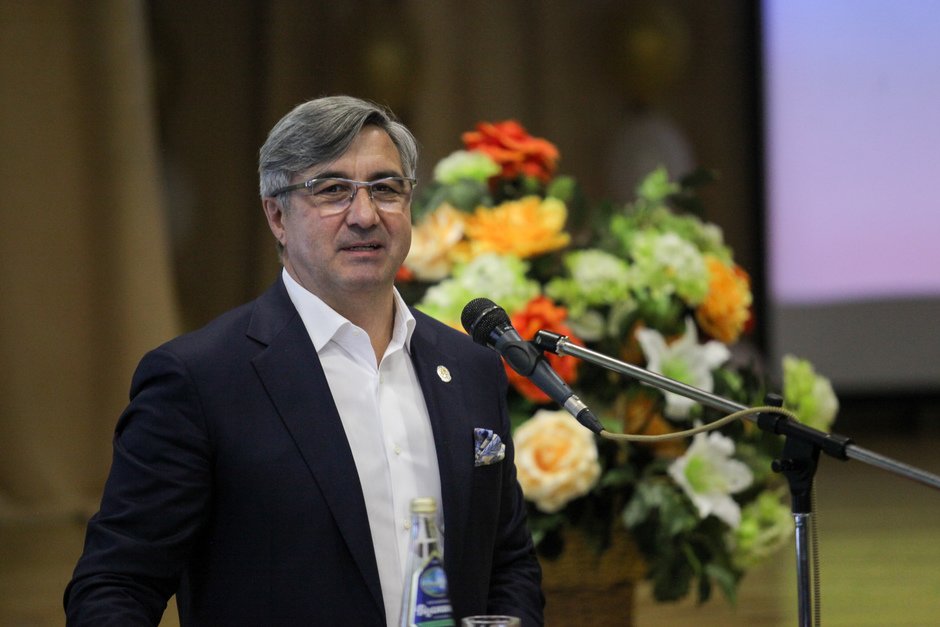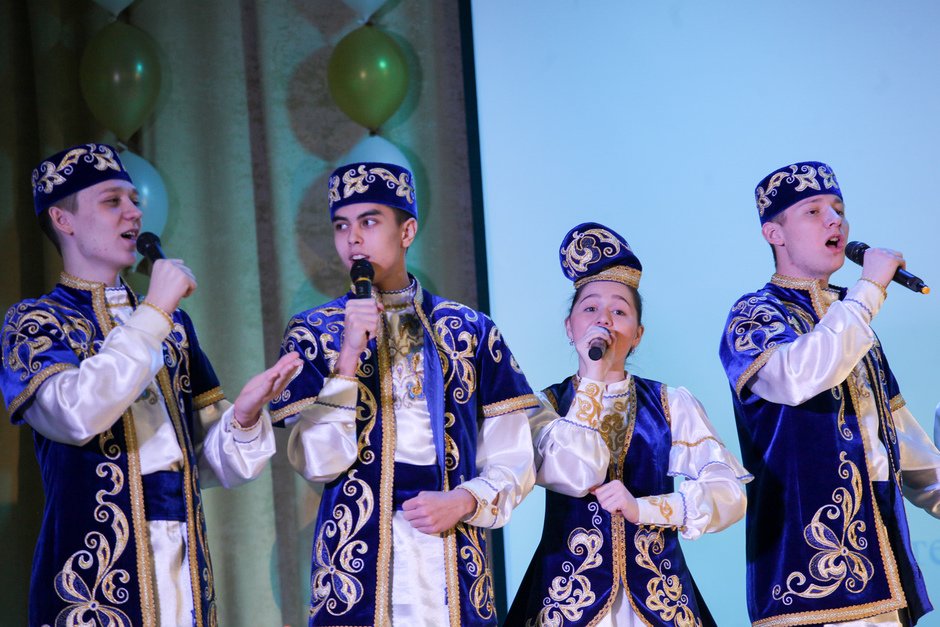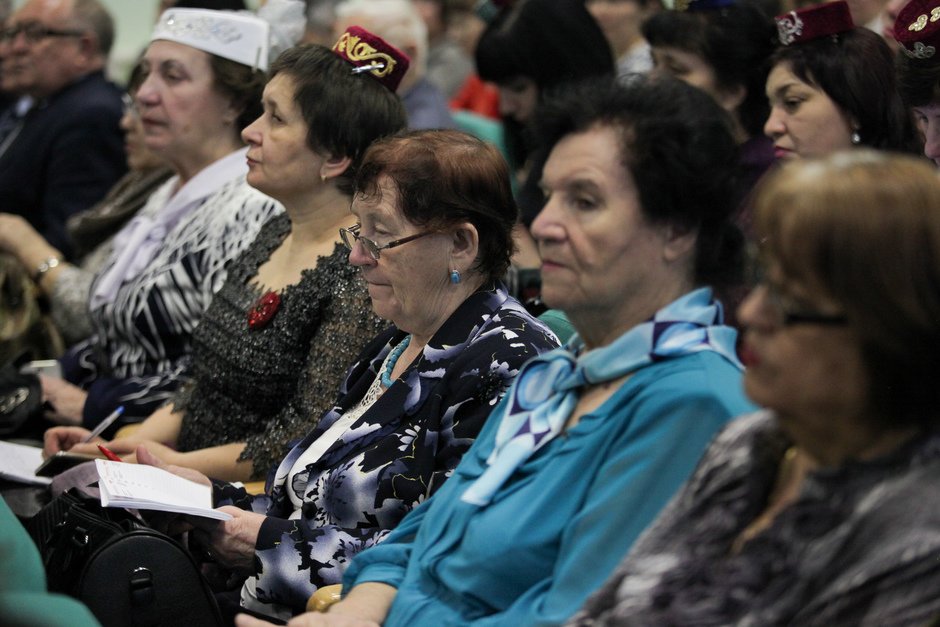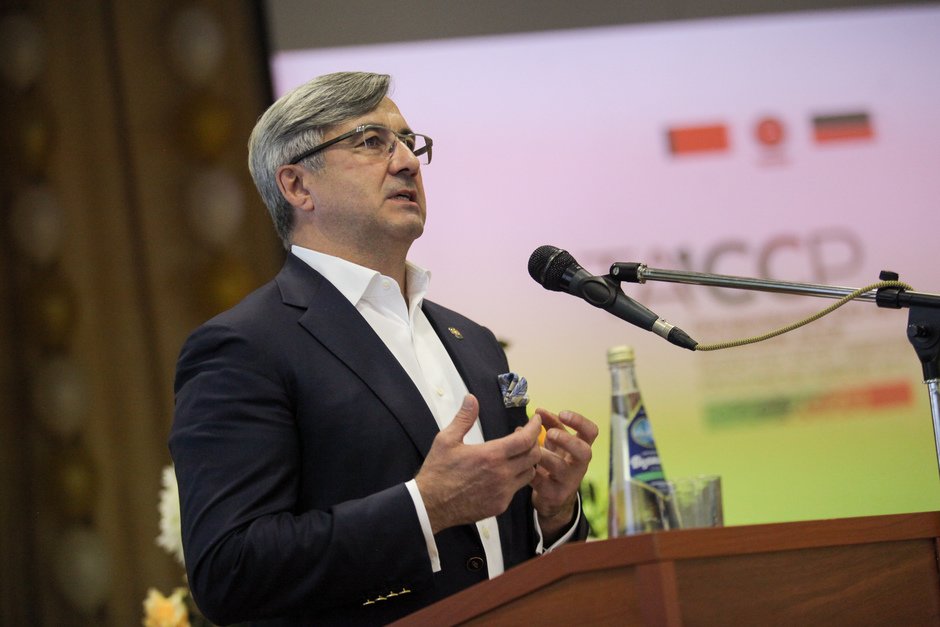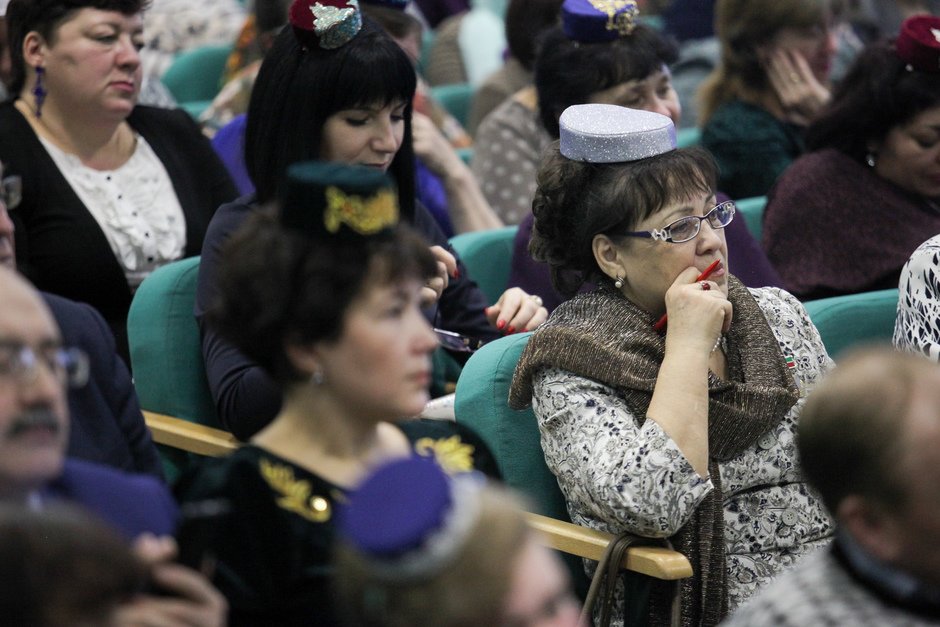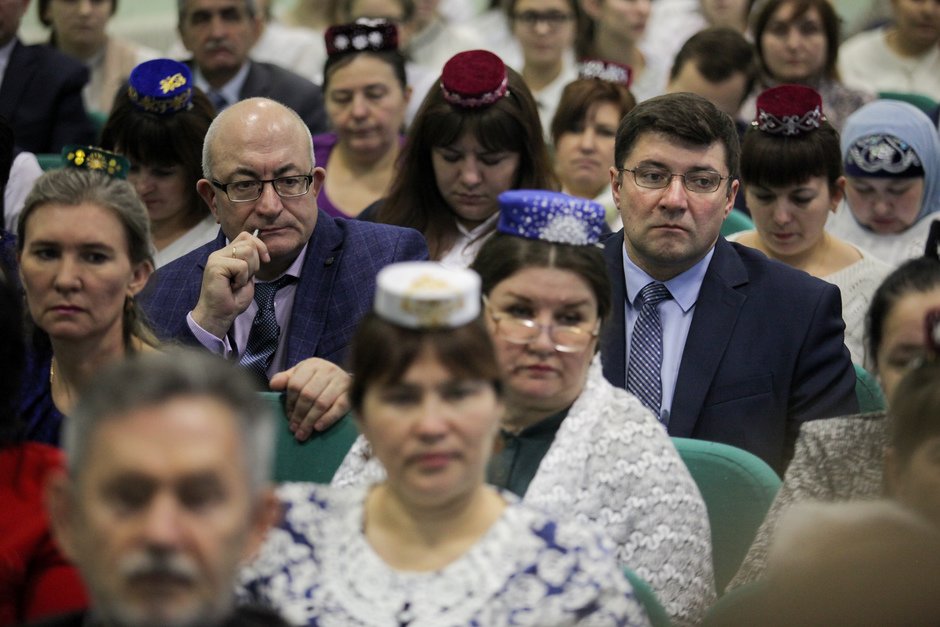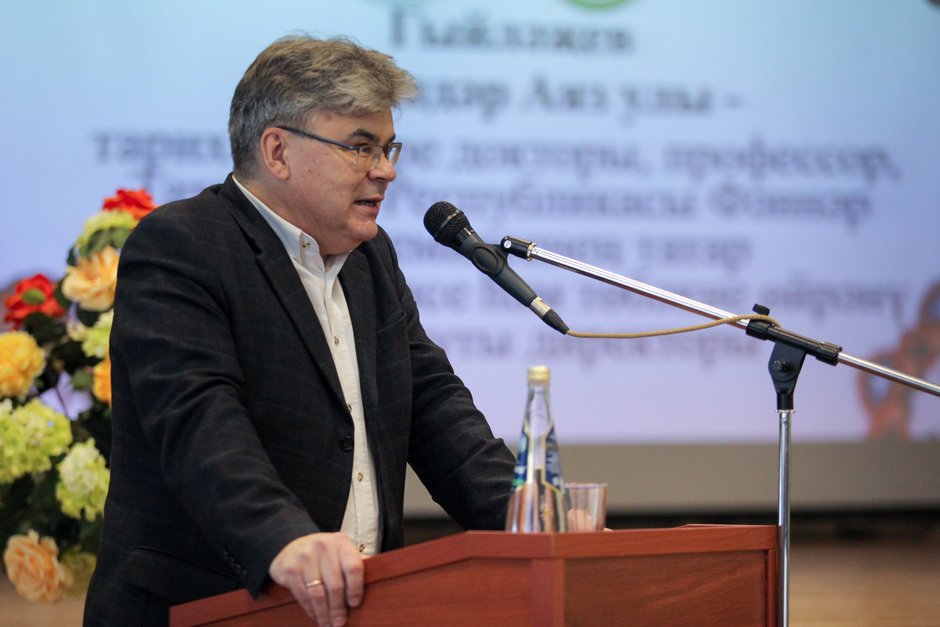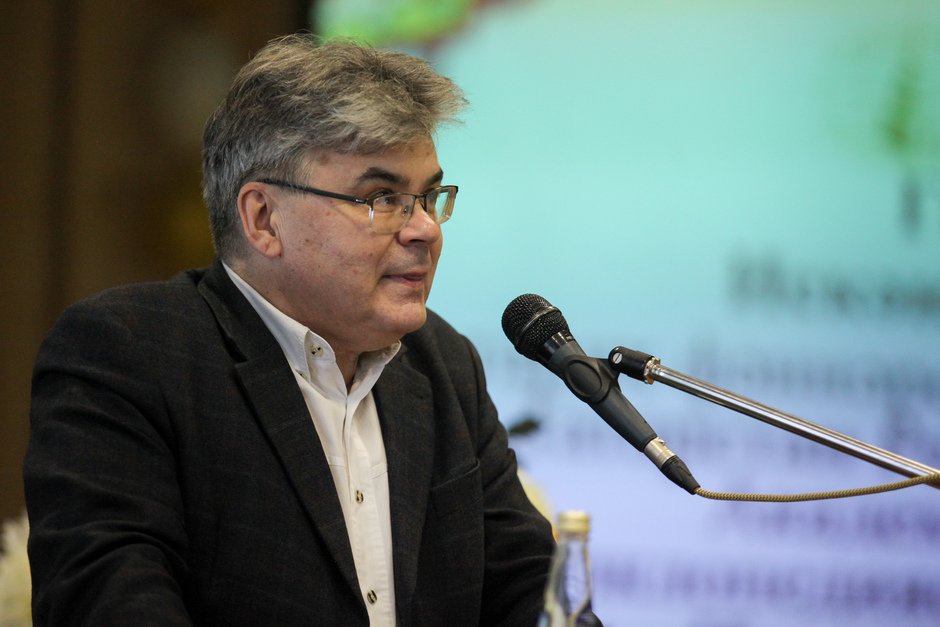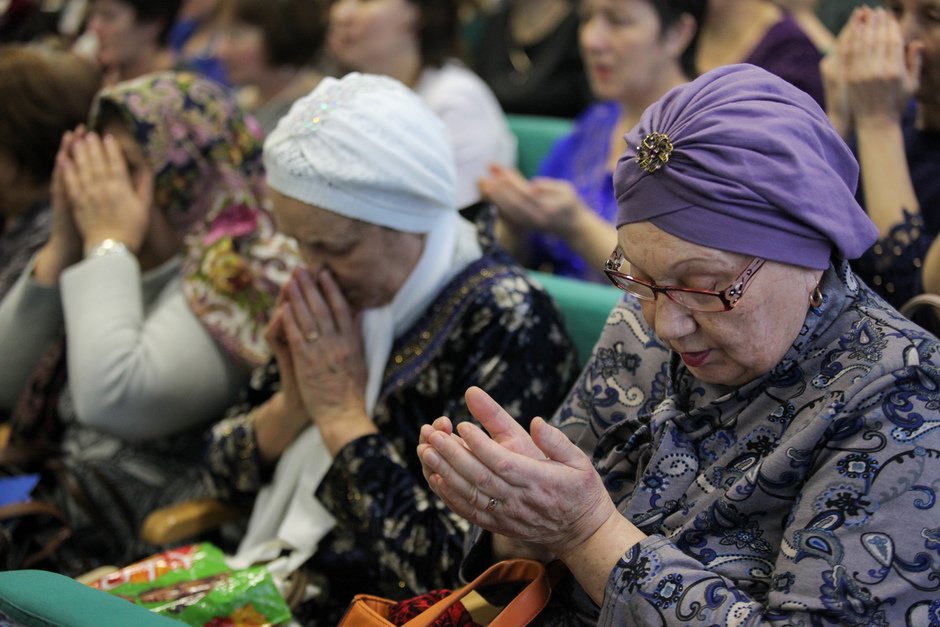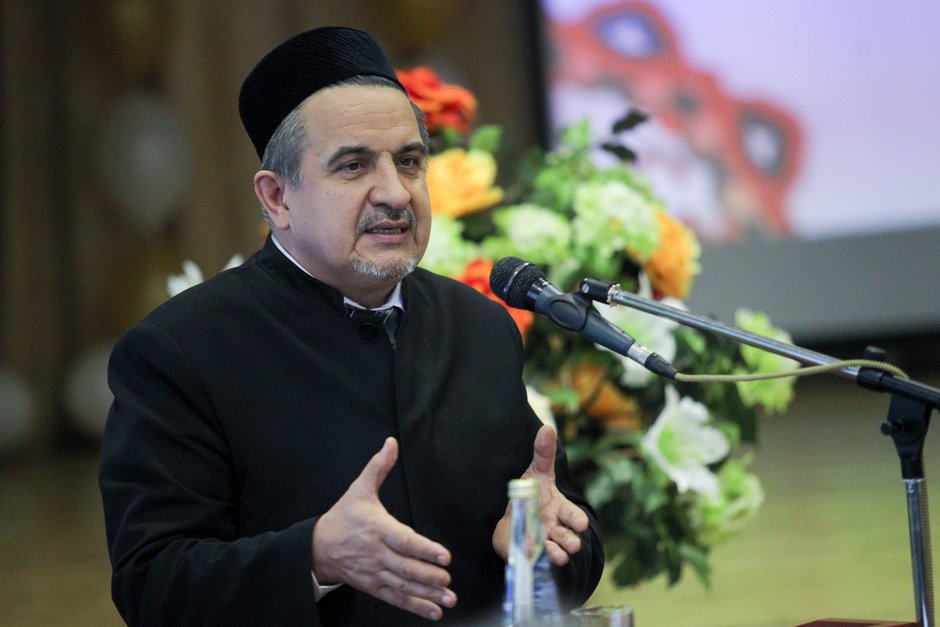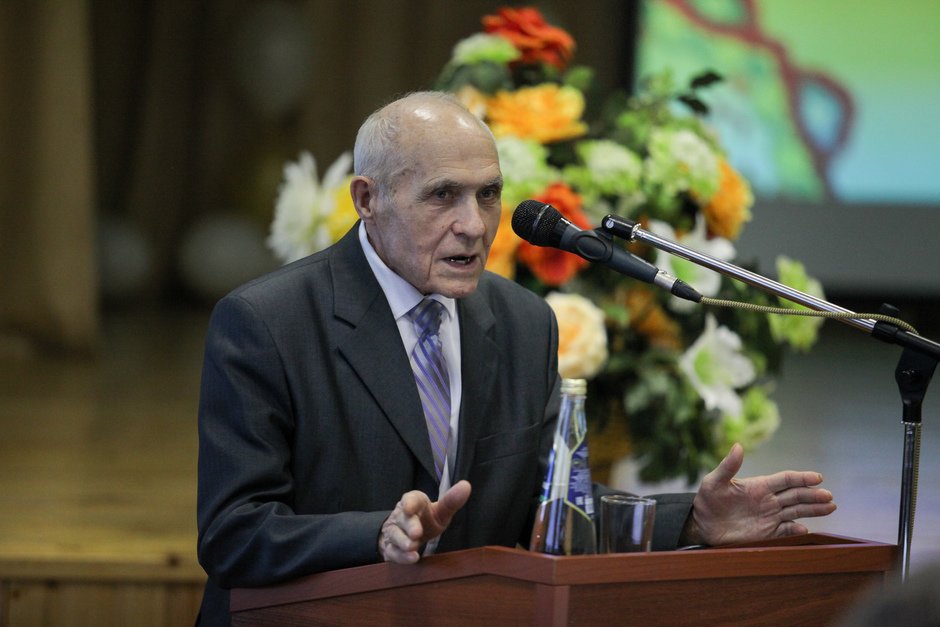''Who I am if not Tatar'': first public discussion of draft of Tatars' strategy
While 31% of irresponsible parents pull the Tatars back
The first public discussion of the ''draft'' (as it was stressed) of the Tatars' strategy and its first presentation to the audience took place in the Arsk Pedagogical College. Chairman of the National Council of the World Congress of the Tatars Vasil Shaikhraziyev told when the Tatars will achieve sustainable development, if the number of Tatar schools will increase and how national culture will develop. Realnoe Vremya tells the details.
Insight into history of primer and Arsk-style masterclasses
It seemed that the guests who came were determined and wanted to immediately get down to the discussion of the strategy. But it wasn't possible to go straight to the college's hall where the discussion would be later – the people were divided into three groups and sent outside again. One of the groups went to a kindergarten, the second – to a school, the third – to an art school. Realnoe Vremya's correspondent joined the third team.
The trip was preceded by a tour to Alifba museum, that's to say a Tatar primer, which is located in the Arsk Pedagogical College. As Director of the museum Damir Taziyev told they have primers of 65 nations of the world, in addition, the exposition consisted of about 400 exhibits. A logical question a reader might have: why did the Tatar primer museum open in the Arsk Pedagogical College – was the first primer created in Arsk? But residents of Tatarstan probably have seen and held the Tatar book in hand whose blue cover has a girl in Soviet school uniform with a bunch of flowers in her hands and a ginger dog running along her. As Taziyev explained, spouses Ramziya Valitova and Salyay Vagizov are its authors, they were teachers of the Arsk Pedagogical College. Once they won a contest to create the primer going ahead of famous scientists. But the authors' life wasn't a piece of cake before it – Salyay Vagizov spent 10 years in camps as an enemy of the people. His wife even had to officially refuse him.

After the excursion, as it was promised, the group was taken to the art school. It is hard to miss the building itself thanks to the constructors who traditionally covered it with materials of very bright colours during repairs. Though who knows, maybe it was a reference to avant-garde movements in art. But the school itself left a pleasant impression – children's works were done with talent. In the art school, the guests were again subjected to interaction and divided into another three groups and were then offered to not only look at the pupils' ready works but also create themselves. So Realnoe Vremya's correspondent left the masterclass with a hand-made felt trivet.
Large-scale tasks and analogies with Komsomols
Having won all scheduled interactive events, the people began to occupy seats in the college's hall where, in fact, the presentation of the draft of the Tatars' strategy was held. We should explain that the Congress of the Tatars calls those who came to the first public discussion of the Tatars' strategy ''activists''. As Realnoe Vremya's correspondent was said, apart from scientists, writers and other famous figures, members of public organisations (for instance, White Kalfak) and teachers joined the group of activists. Pedagogical college students filled the other rows of the hall.
Telling about the preparation work to create the strategy, Chairman of the National Council of the WCT Vasil Shaikhraziyev joked it was tough because ''if two Tatars meet, three opinions appear''. He warned from the beginning the Tatars' strategy wasn't ready or, more precisely, only its draft was. Public discussions are planned to be in January in Tatarstan, and in February-March in seven federal districts of Russia from Sakhalin to Leningrad Oblast. A big meeting will be in Kazan in early April. There will be round-table talks, online forums in April-May.
The transition from the draft to the project, which might be adopted by 30 August this year, is scheduled for 10 June. During the discussions, the Congress will accept proposals, remarks that anyone can make. By the time the first public discussion began, the draft had already been published on the website of the WCT, the meeting itself was transmitted online.
''After I was chosen the chairman of the National Council at the 6 th World Session of the Congress of the Tatars 1,5 years ago, I said that first of all we needed a strategy. Last September our president gave the WCT such a task for the first time in his address – to write, adopt and fulfil the Tatars' strategy. It's not only the task of the WCT executive committee but also all the Tatars,'' Shaikhraziyev noted.
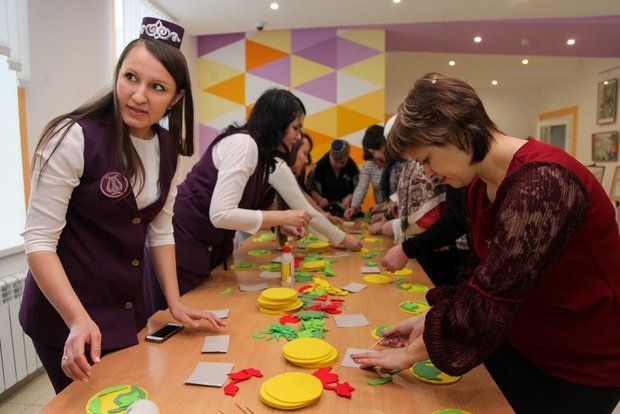
The provisional name of the strategy – Who If Not Tatar – can also change. The development of the Tatars' identity in the changing world is claimed as the main task. Besides key principles, their deadlines are also defined. It's planned to create a single social and cultural space by 2020 already. The Tatars' life is to be adapted to the changing world by 2030, sustainable development of the Tatars will be achieved by 2050. Shaikhraziyev admitted the date was quite remote.
''If we can gather in 2050, we will remember us writing this strategy in 2019. The youth will probably include this to history. A capsule buried by Komsomols in the 1970s has been recently opened in Siberia,'' Shaikhraziyev said. He perhaps meant the capsules laid by Komsomols in 1967 that were opened in the 100 th anniversary of the October Revolution. However, the example isn't good – the messages have survived by now, of course. But the Komsomols would be very surprised to know the path their descendants chose. We just can hope the Tatars' strategy principles will be really followed down 2050.
During the presentation, Shaikhraziyev also noted the Tatars' strategy correlated with the state national politics strategy until 2025, which Russian President Vladimir Putin updated in December. It's not very clear how they correlate considering that the president's document focuses on uniting and strengthening the Russian language's status.
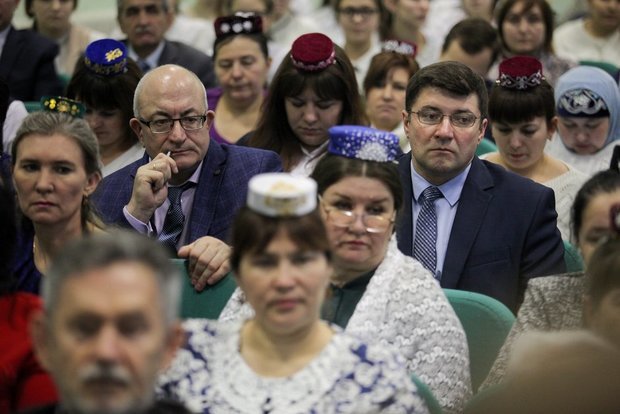
''31% Tatar families didn't want to teach their children Tatar''
The next clause of the strategy we'd like to talk about more is four basic growth areas: the organisation of the Tatars' life, education, culture (language, traditions, art and literature) and the information space.
Vice-President of the Tatarstan Academy Science Dania Zagidullin acquainted the people with the road map and defined specific actions to achieve growth. She particularly told it was necessary to develop modern infrastructure in the countryside, support the youth, support small and medium-sized businesses, give Tatar names to children, inculcate diligence, charity, financial support when holding rural and urban celebrations and so on in the growing generation to organise the Tatars' life.
However, an unpleasant situation arose – Zagidullina lost her voice, she had a fit of coughing. Shaikhraziyev rushed to help as a gentleman and continued the presentation. By the way, head of the Executive Committee of the World Congress of the Tatars Rinat Zakirov didn't approach to the microphone during the presentation. Shaikhraziyev meanwhile told it's planned to augment the number of Tatar kindergartens, primary schools, lyceums and gymnasiums, create a model of the exemplary national school to develop education. But this will be done with a proviso.
''They can be augmented if parents want it. If parents have different ethnicities, they discuss if their the child should attend the Tatar school or not. If two Tatar people go to the city, they forget the language and start speaking Russia, problems arise. This depends on parents, it's they who file a form. Nowadays 69% of Tatar families in Tatarstan filed a form and want their children to learn Tatar. The 31% didn't,'' Shaikhraziyev criticised parents.
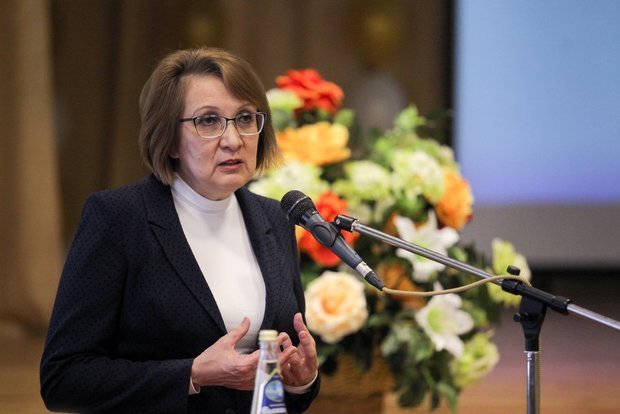
Tatar groups should appear in universities and vocational establishments. The creation of a Tatar university was a separate clause in the strategy.
''Nowadays we already have 75 students. We opened it, but we can't talk about it until it obtains accreditation,'' the chairman of the National Council noted.
After the meeting, journalists tried to find out details. But Shaikhraziyev refused to give any comments on the strategy.
The expansion of the sphere of application of the Tatar language, development of the urban environment, support and development of national poetry, drama, fine arts, prose, opera, ballet and so on, the preparation of clerics who speak Tatar, creation of the national environment by using national ornaments, propaganda of Tatar music and others were called among the main proposals on development of Tatar culture. To create the information space, the document offers to make the journalism school stronger, create Tatar cartoons, organise round-the-clock TV and radio transmission in the Tatar language.
The majority of speakers who delivered a speech after Shaikhraziyev expressed their hope that the strategy would anyway be created and help the Tatars to develop. However, there weren't specific offers made either orally or on paper. They will probably appear during next discussions, especially if one can get acquainted with the draft of the strategy on the WCT's website.
